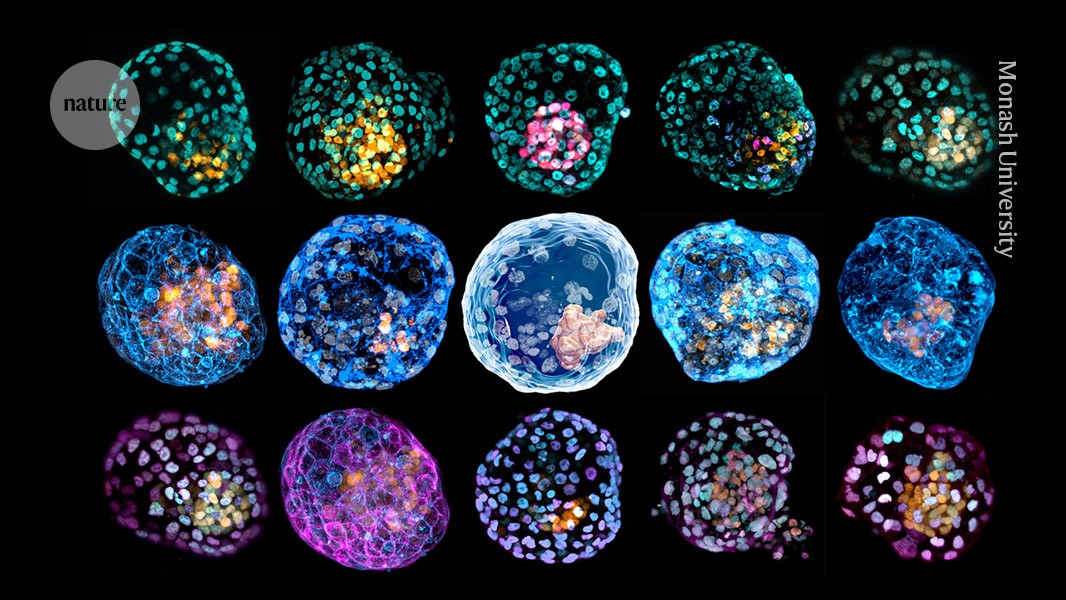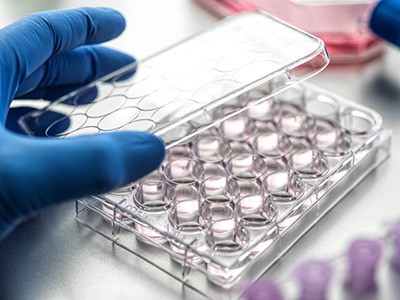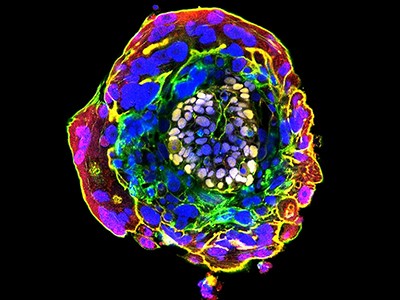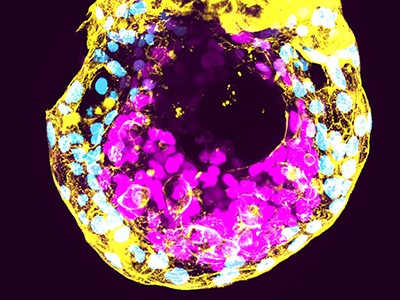Under his microscope, Jun Wu could see several tiny spheres, each less than 1 millimetre wide. They looked just like human embryos: a dark cluster of cells surrounded by a cavity, and then another ring of cells.
But Wu, a stem-cell biologist at the University of Texas Southwestern Medical Center in Dallas, knew that these spheres were not what they seemed. They were laboratory-grown models of embryos, and they were far from perfect replicas.
Entire groups of cells were absent and others were there that didn’t belong. And Wu knew that, eventually, the models would perish abruptly and chaotically.
If embryo models were houses, then behind the facade they would have uneven floors, distorting mirrors and ghosts in their closets. Nonetheless, dozens of labs are competing to grow the best likeness of a human embryo.
There are as many models as there are groups making them, each recapitulating slightly different aspects of embryo development in the hope of uncovering new biology about the first weeks after conception.
Why researchers should use human embryo models with caution
This high-stakes, high-drama period “is shrouded in mystery”, says Nicolas Rivron, a developmental biologist at the Institute of Molecular Biotechnology of the Austrian Academy of Sciences in Vienna. In the womb, these embryos are too small to be observed using ultrasound. And in the lab, there are technical, ethical — and often legal — limits to studying real embryos outside the body beyond 14 days after conception.
Insights from embryo models could help to explain why about one-third of natural embryos don’t make it past their first weeks. This could help to address infertility, improve the success rate of in vitro fertilization and even prevent diseases that emerge early in development. Models could also be used to test the safety of drugs for embryos.
But as the models become increasingly complex, and reach symbolic milestones, such as the first heartbeat, they raise tricky ethical questions. Ethicists, regulators and legal specialists are scrambling to keep up with the pace of research.
Meanwhile, the field is fizzing with energy. In February, researchers organized the world’s first scientific meeting entirely dedicated to embryo models. And several scientists have launched spin-off companies to use models to develop therapeutic molecules, test drugs and improve fertility treatments. Embryo models are “pretty much the hottest topic right now”, says Insoo Hyun, a bioethics consultant for the Broad Institute of MIT and Harvard in Cambridge, Massachusetts.
Epic show
The meeting of egg and sperm triggers a process of rapid and precisely choreographed cell division and differentiation. In the first week, around 100 cells form a hollow circle known as the blastocyst. This is made up of three distinct groups that eventually grow into the embryo, the supportive yolk sac and the placenta.
Then the embryo implants itself in the uterus. From about two weeks, embryos go through a process known as gastrulation, in which cells are committed to becoming one of three cell types and organize into layers. These layers differentiate further into lungs, guts, muscles and other organs, in a process known as organogenesis.
“The embryo is never static,” says Naomi Moris, a developmental biologist at the Francis Crick Institute in London. “It undergoes these huge dramatic shifts.”
Researchers have attempted to recreate this epic show in a dish. These efforts — often done in mice and then in humans — have typically captured snapshots of the process.
In 2014, researchers coaxed human embryonic stem cells into three distinct rings — precursors to cells that form the embryo and the placenta1. Later models featured amniotic cavities and yolk sacs, and some were 3D. By 2020, some researchers had recapitulated an aspect of gastrulation2, in which the embryo elongates into a tube-like structure.
But many of the early studies wouldn’t be considered models of an entire embryo by today’s standards, says Wu.
Complete model
A major milestone came in 2021, when Wu’s group3 and another team4 published models that resemble the human blastocyst (see ‘Model development’) — typically the stage at which embryos are transferred to the uterus during in vitro fertilization.
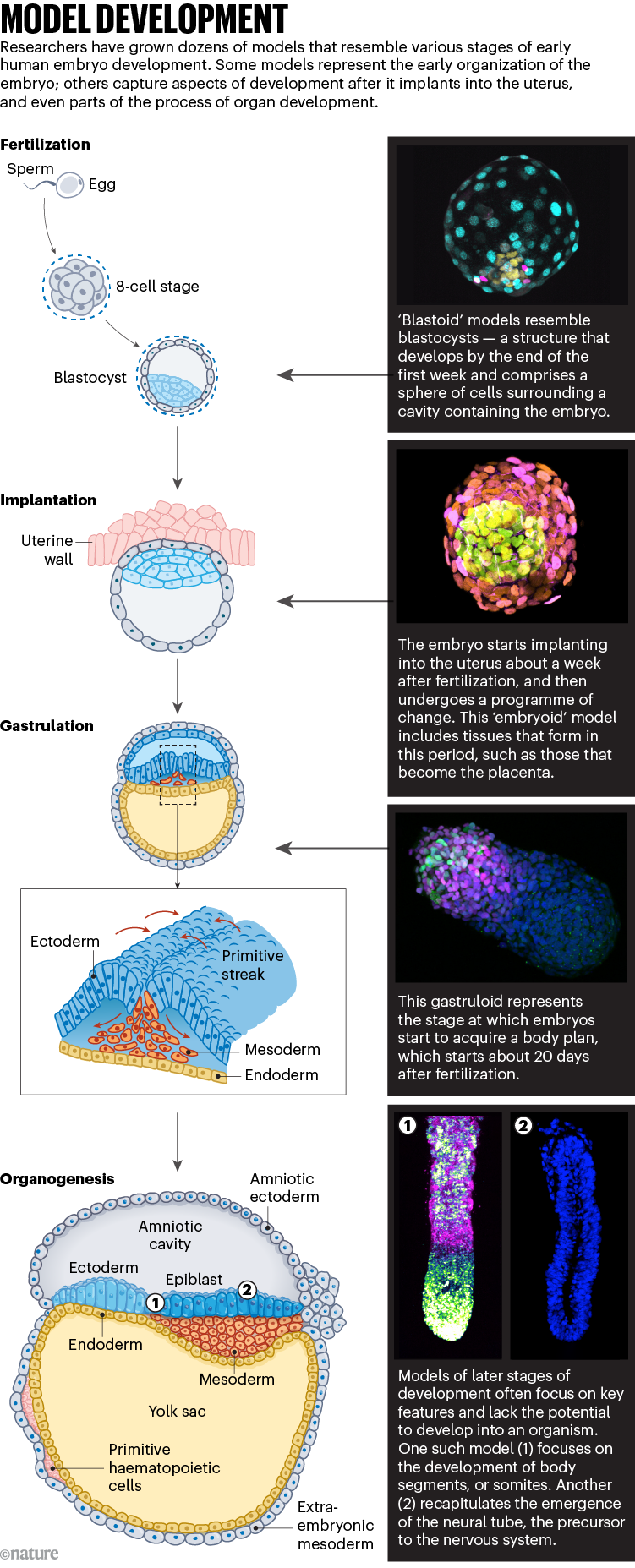
Credit: Nik Spencer/Nature; top to bottom: ©Rivron/Nature/IMBA; Bailey A. T. Weatherbee et al./Nature (CC-BY); Naomi Moris/Univ. Cambridge; Yuchuan Miao et al./Nature; Xufeng Xue et al./Nature
These models, called blastoids, contain cells that form the embryo and those that will support it, called extra-embryonic cells, making them the first ‘complete’ or ‘integrated’ models of the human embryo.
“They’re not perfect,” says Marta Shahbazi, a stem-cell and developmental biologist at the MRC Laboratory of Molecular Biology in Cambridge, UK. But “they’re pretty good”.
Some groups have tried to capture even earlier stages of development, using cells with the ability to turn into every cell type required for embryonic development (most models use cells with more limited abilities).
In 2022, Miguel Esteban, a stem-cell biologist at the biotechnology company BGI Cell in Shenzhen, China, and his colleagues developed a model resembling the eight-cell embryo that typically forms three days after fertilization5. And this June, Du Peng, a stem-cell biologist at Peking University in Beijing, made similar blastomere mimics that eventually form blastoids without needing to be doused in chemicals6.
Writing the rules
Ever since the first embryo models appeared, ethicists have been striving to address the dilemmas that they pose. The International Society for Stem Cell Research (ISSCR) developed guidelines in 2021; many countries are considering their own guidelines and legislation.
Australia’s rules are some of the most stringent in the world. In 2020, biochemist Jose Polo, who leads a team based at Monash University in Melbourne and the University of Adelaide, informed Australia’s regulatory body overseeing embryo research, the National Health and Medical Research Council, that he had developed blastoids, and was asked to put the work on hold.
The regulator wanted to assess whether blastoids met the criteria to be considered an embryo under the current laws, which define embryos as biological entities with the potential to develop to a stage, roughly two weeks in, at which a structure called the primitive streak appears and the entity moves towards having a body plan.
What is an embryo? Scientists say definition needs to change
Some five months later, the answer came back: they did, said the agency, because of their theoretical potential to develop a primitive streak. As a result, the same limits that apply to research on real embryos would apply to blastoids.
It was a devastating setback, says Polo. His team had to get a specific embryo licence, which bars the group from growing blastoids to study later stages of gastrulation and organogenesis. “I think that they made a mistake,” says Polo about the agency’s ruling. The rules also limit the number of blastoids that can be made, and require stricter consent from those donating cells to be used in them.
Every country is charting its own course. Some points of contrast are how countries define an embryo, whether that definition extends to embryo models and how permissive the rules are to research. Regulators are often guided by rules and norms designed for research on real human embryos when thinking about embryo models, says Megan Munsie, a developmental biologist and bioethicist at Murdoch Children’s Research Institute in Melbourne.
And these discussions often transcend the world of research, finding relevance in other domains, such as reproductive health, abortion, women’s rights and regenerative medicine, says Alfonso Martinez Arias, a developmental biologist at the University Pompeu Fabra in Barcelona, Spain. “Our echo chamber is very large,” he told a room packed with his peers at the annual ISSCR meeting in Hamburg, Germany, in July.
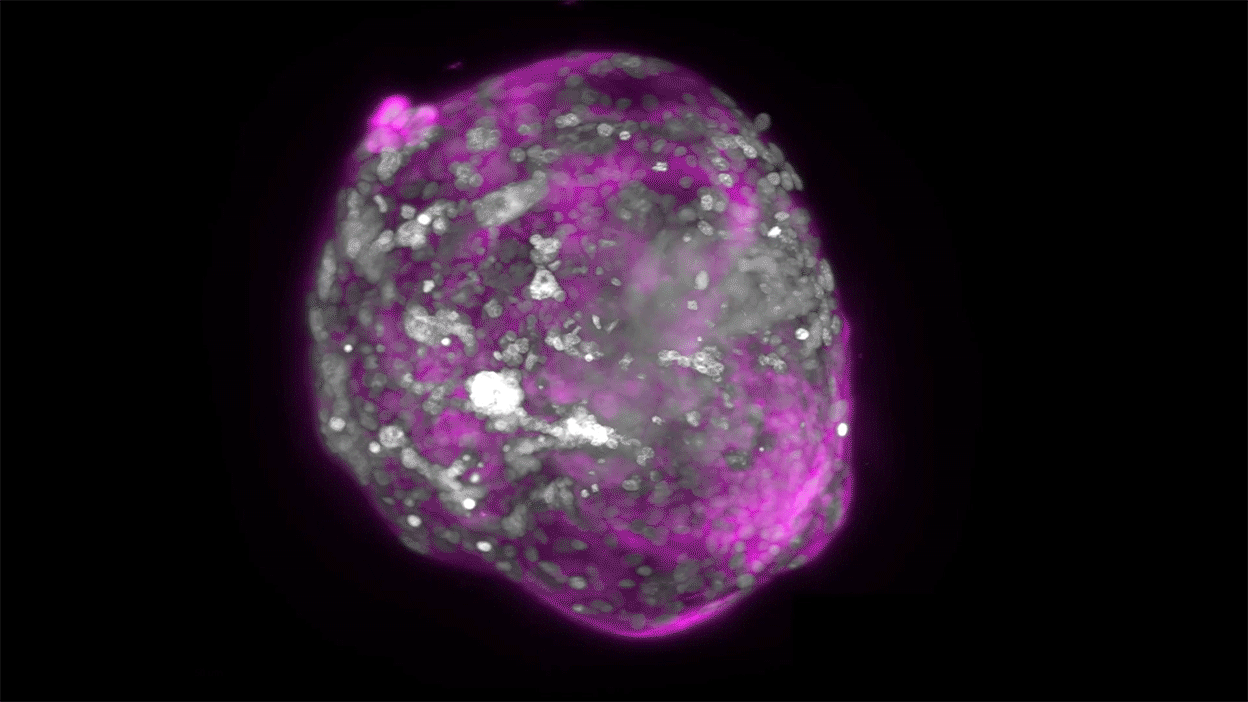
Human embryo models are trying to capture aspects of the development of real embryos, such as this one at the 16-cell stage.Credit: Bernardo Oldak et al./Nature
Because embryo models differ in lots of ways from the real structures, most countries treat the two differently. In Spain, for example, the definition of an embryo is based on fertilization, which excludes embryo models, says Nienke de Graeff, a bioethicist at Leiden University Medical Centre, the Netherlands.
Some definitions focus on the embryo’s potential to form or become something else. The ISSCR has said that, based on their potential, embryo models cannot be considered to be embryos, and most countries take a similar view.
Some have proposed revising regulations concerning real embryos to cover some types of embryo model. In the Netherlands, says Nienke, a scientific advisory body proposed a ban on growing the models beyond the equivalent of 28 days in real-embryo terms. France is considering the same limit. Researchers in the United Kingdom did something a little different in July: they published voluntary guidelines for embryo models that do not set fixed limits on how long they can be cultured. The guidelines could eventually lead to the passing of binding legislation — as happened with similar voluntary UK guidelines around embryo research several decades ago.
The UK guidelines and 2021 ISSCR guidelines do, however, forbid the transfer of human embryo models into a uterus, and several other countries, including Sweden and Japan, are considering introducing similar restrictions.
Science accelerates
Meanwhile, the science keeps moving at such a pace that regulators have a lot to keep up with. In June 2024, the ISSCR announced that it had set up a working group to assess the state of the science and review earlier guidelines, in light of the models published since 2021.
In 2023, around half a dozen teams described models that recapitulate the development of embryos just after implantation. Two models in particular were widely covered by the media — one by Magdalena Zernicka-Goetz, a developmental biologist at the California Institute for Technology in Pasadena, and one by Jacob Hanna, a stem-cell biologist at the Weizmann Institute of Science in Rehovot, Israel. They were described as complete post-implantation models, but that title has been hotly debated.
“These are not complete models,” says Rivron. The one by Zernicka-Goetz’s group7 doesn’t have cells that behave like trophoblasts, which provide nutrition for the embryo — and although Hanna’s8 does contain a trophoblast-like layer, it isn’t as organized as the real thing, say researchers.
“It’s almost like a beauty contest — whose ‘model’ looked better,” says Jianping Fu, a bioengineer at the University of Michigan in Ann Arbor. “There’s a lot of excitement, but at the same time, there’s some hype in the field right now.”
Some researchers question the value of chasing a complete model. It’s a “pretty exquisite balancing act”, says Hyun. Researchers want models to resemble an embryo closely enough that they provide real insight into human development but not so closely that they can’t tell the difference between the two, and so risk restrictions to their work. “You want to skate as close to the edge as possible, without falling over,” he says.
Some researchers try to avoid this ethical dilemma by intentionally introducing changes to their embryo models that would make it impossible for the model to result in an organism. For example, Hanna has started working on models in which genes involved in brain and heart development have been inactivated. He has inferred from discussions with Christian and Jewish leaders in his community that an embryo model lacking brain or heart tissue would not be considered a form of person.
Fu has described a model9 that he says alleviates some of the ethical burdens because, although it reaches gastrulation, it gets there without first forming the primitive streak.
Such models can be insightful and useful, say researchers. One, first published last December, has generated excitement because of how well it reflects some aspects of real embryos10, as well as its direct implications for the clinic. When Mo Ebrahimkhani, a stem-cell bioengineer at the University of Pittsburgh, Pennsylvania, and his colleagues grew 3D models on a dish, they noticed the appearance of tiny blood islands. Those islands held the first progenitors of blood cells, including immune cells known as macrophages, platelet-producing cells and cells containing haemoglobin. As Ebrahimkhani has found in unpublished work, these models could be used to produce large amounts of blood stem cells, which could be useful for transplants in people with cancer or genetic diseases.
Organ making
At about three weeks, the embryo starts the momentous organ-growing process that lasts more than a month. Several teams have homed in on aspects of this organogenesis, growing models that resemble only pieces of the embryo — this has potentially fewer ethical constraints than modelling the whole structure.
One such model11 recapitulates the rhythmic process by which the body forms repeating segments known as somites, which give rise to vertebrae. And earlier this year12, Fu’s team described a model of the neural tube, the progenitor of the central nervous system, complete with a treasure trove of cells, including the precursors to some neurons.
But even these models aren’t without controversy; those that contain nerve cells raise ethical questions around the emergence of sentience, says Hyun.
What’s next for lab-grown human embryos?
The next frontier for embryo-like models is to nestle them in environments that more closely resemble the womb, and study how embryos interact with its lining. Researchers have shown that blastoids placed on cells that make up the lining of the uterus can burrow in and fuse correctly. Co-culturing embryo models with this maternal tissue could help models develop as natural embryos would.
Some scientists have gone even further using cells from other animals, including non-human primates. For example, in unpublished work, Liu Zhen, a developmental biologist at the Institute of Neuroscience at the Chinese Academy of Sciences in Shanghai, has grown monkey blastoids in a dish for long enough to reach early organogenesis.
In 2023, Liu transferred blastoids into eight monkeys, three of which experienced the hormone surge observed in early pregnancy13. The blastoids formed gestation sacs but then stopped developing. Cow and mouse blastoids transferred into their respective species also don’t survive long.
There are currently no rules prohibiting the transfer of non-human embryo models into living animals, with the exception of humans, but Hyun worries that if such transfers do lead to a live birth, that will cause a backlash against the research and have a detrimental effect on studies using human embryo models. The intellectual leap from monkey to humans is easy to make, he says. “You don’t actually have to do the human experiment to have a pretty major concern.”
When is it an embryo?
Most researchers agree that today’s human embryo models are nowhere near the real thing. The key challenge for researchers who are developing guidelines is determining “when an embryo model would be considered equivalent to an embryo”, says Amander Clark, a developmental and stem-cell biologist at the University of California, Los Angeles, who co-chairs the ISSCR’s working group on embryo models.
Given that ethical norms prohibit the transfer of embryo models into a uterus to see whether they can give rise to an organism, researchers are coming up with other tests of their potential. Some groups are developing tools to better compare embryo models with real embryos, for example by looking at the cells’ RNA profiles. But even these gene-expression exercises can miss key information, says Hanna, such as the positions of cells in an embryo.
Assessing and improving models is important for science, as well as for ethics, says Fredrik Lanner, a stem-cell and developmental biologist at the Karolinska Institute in Stockholm. If the models aren’t good, then they’re not useful, he says. It’s “really critical now for us to not waste time on bad models”.
That standard setting is especially important as the field starts to offer real insights into early embryonic development. There have already been some surprises, says Moris. Most notable is the ability of cells to switch personas — their plasticity — and their capacity to self-organize, often without the aid of extra-embryonic tissue.
Some models are even revealing new phenomena. Researchers have long known that, in some mammals, embryos that are fertilized in the summer ‘hibernate’ and restart development later so that the young are born in the spring. In unpublished work, Rivron and his colleagues have been able to cajole human blastoids into this state of suspended development.
But so far, he says, embryo models have not led to scientific discoveries of societal value, and it’s not clear which models will help researchers get there.
“There’s been a lot of debate, arguments, especially drama, in the past”, along the lines of “my model is better than yours”, says Wu. The reality is that every model is imperfect, but every one is useful, he says. It just depends on what the question is.


